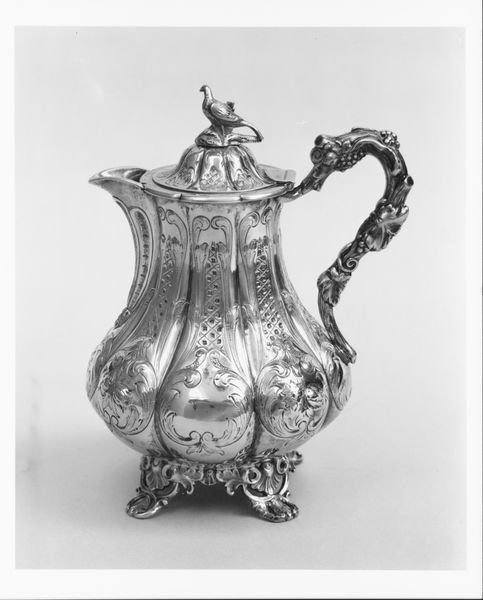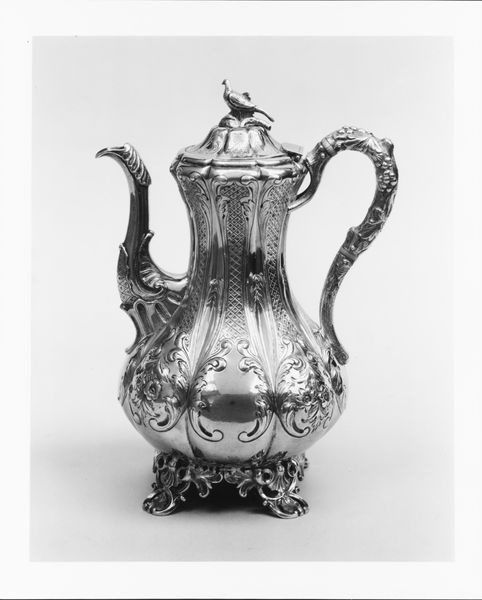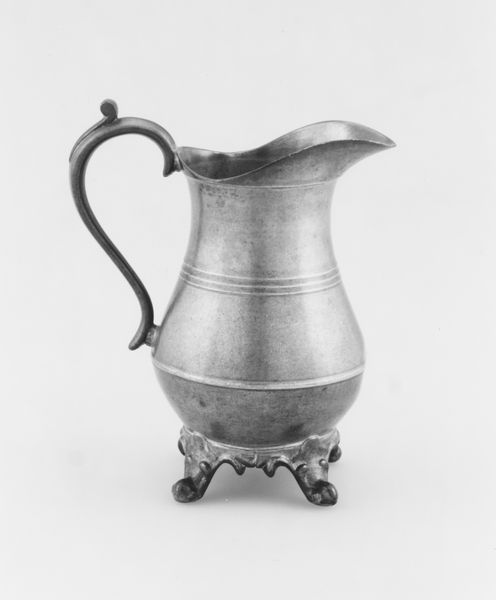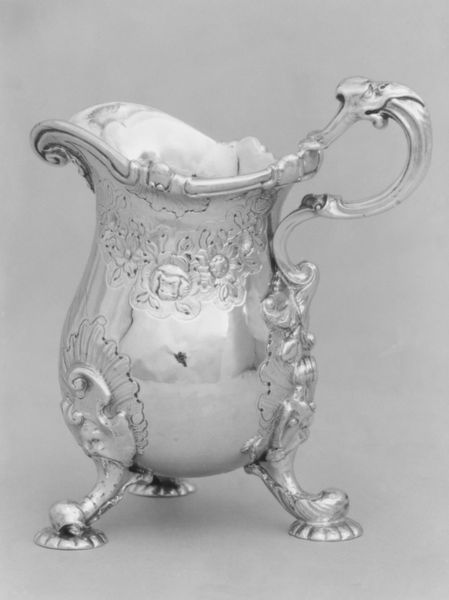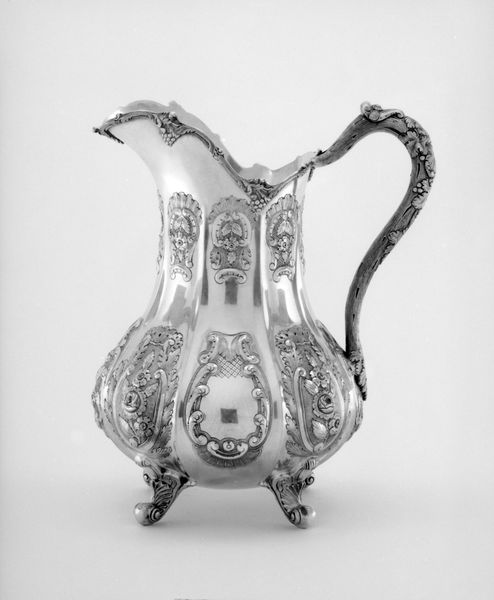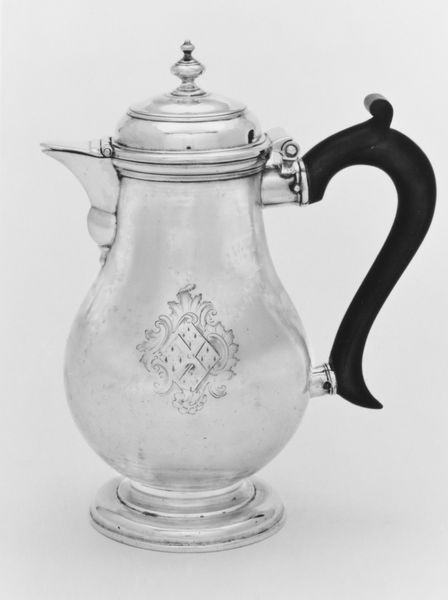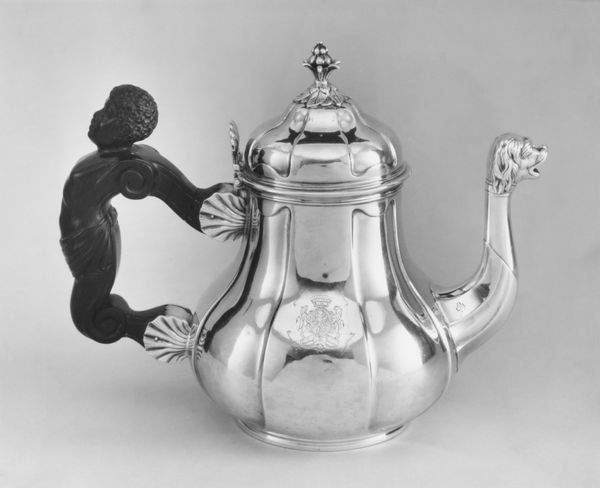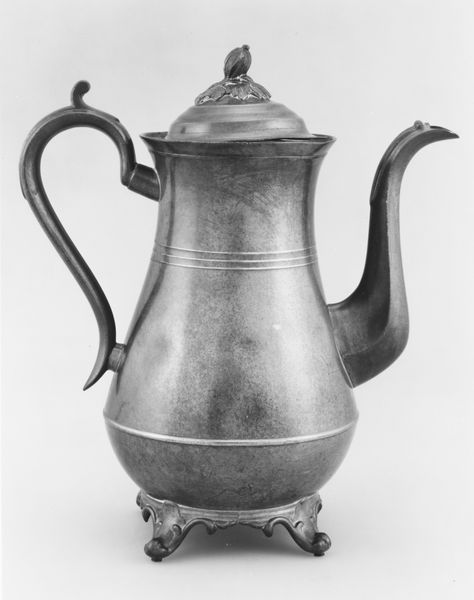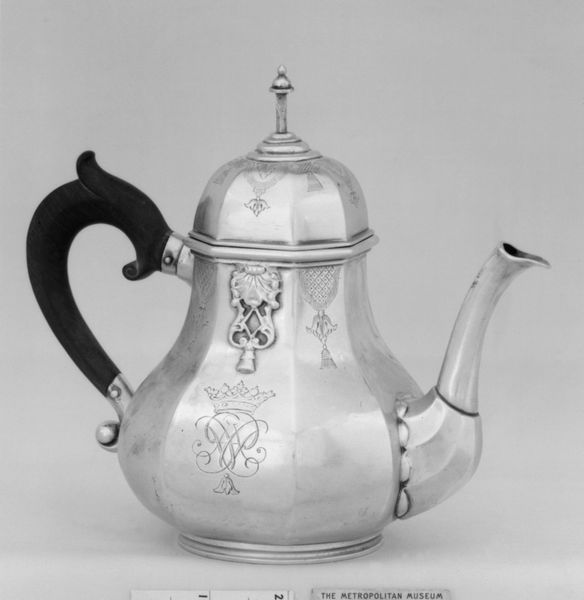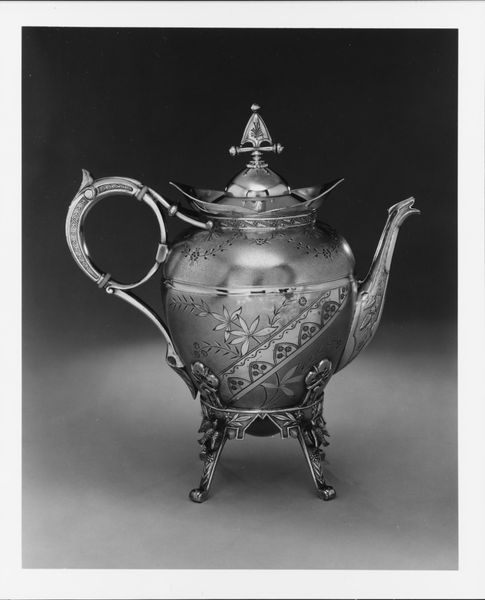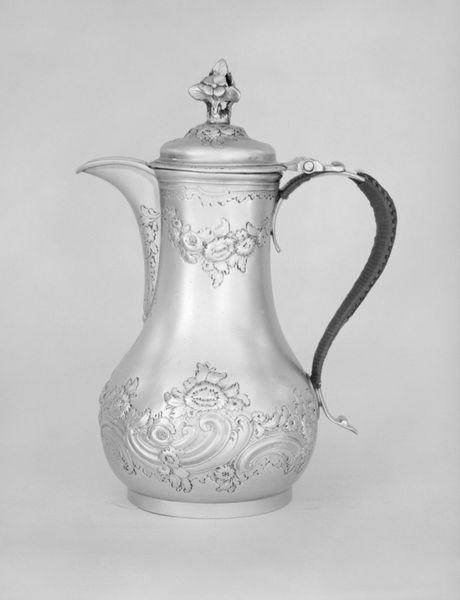
silver, sculpture
#
silver
#
baroque
#
sculpture
#
decorative-art
Dimensions: Height: 4 1/2 in. (11.4 cm)
Copyright: Public Domain
Editor: Here we have a "Jug," crafted from silver, sometime between 1726 and 1727. It strikes me as delicate, almost precious, resting on those elegant little legs. How do you interpret its significance, considering its materials and form? Curator: Well, let’s consider silver itself. It's a material inextricably linked to power, wealth, and control. This wasn't just a jug; it was a declaration of status. How do you think the labor involved in its creation contributed to its value, both economic and social? Editor: I hadn't really considered the labor. It must have been incredibly skilled work, which makes it all the more valuable, right? It suggests exclusivity and skilled craftsmanship, far beyond mere functionality. Curator: Precisely. And think about the Baroque style – those elaborate curves, the flourishes. This wasn't about simple utility. The form is almost defiant in its excess. It elevates the act of pouring into a performance, a spectacle. Does the engraved coat-of-arms suggest anything about the original owner's role in the social structure? Editor: Yes, absolutely. It shows it was intended for the elite. I suppose it makes me think about consumption, how material possessions cemented social hierarchies back then. Curator: Exactly. It embodies a system of production and consumption deeply interwoven with social identity. It wasn't just a container; it was a symbol of an entire system. What I take from this piece is not simply elegance, but a stark reminder of power structures embedded within everyday objects. Editor: This silver jug offers an unusual lens for examining class and labor in 18th century society! It definitely makes me appreciate decorative art's capacity to reveal socioeconomic dynamics.
Comments
No comments
Be the first to comment and join the conversation on the ultimate creative platform.
